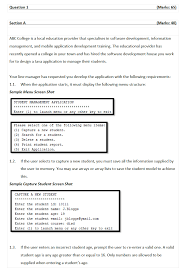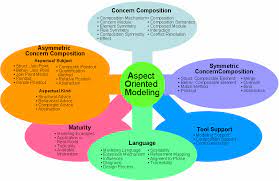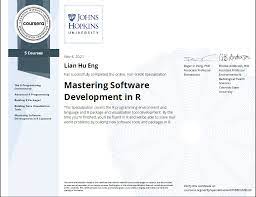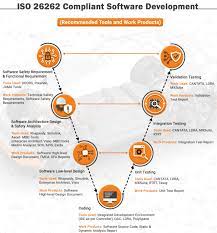Mastering the Art of Computer Software and Database Development
The Importance of Computer Software and Database Development
In today’s digital age, computer software and database development play a crucial role in the success of businesses and organizations. From small startups to large corporations, the need for efficient software solutions and robust databases is ever-growing.
Computer Software Development
Computer software development involves the process of creating, designing, testing, and maintaining software applications that run on various platforms such as desktop computers, mobile devices, and servers. Software developers use programming languages like Java, C++, Python, and more to build applications that meet specific user requirements.
Well-designed software can streamline business operations, enhance productivity, improve customer experiences, and drive innovation. Whether it’s developing custom applications or integrating off-the-shelf solutions, software development is essential for staying competitive in today’s fast-paced market.
Database Development
Database development focuses on designing and maintaining structured collections of data that can be easily accessed, managed, and updated. Databases serve as the backbone of many software applications by storing critical information such as customer records, inventory data, financial transactions, and more.
Database developers use tools like SQL (Structured Query Language) to create database schemas, optimize query performance, ensure data integrity, and implement security measures to protect sensitive information. A well-structured database is essential for efficient data management, reporting, and decision-making processes within an organization.
The Intersection of Software Development and Database Development
The synergy between computer software development and database development is key to building powerful applications that deliver value to users. Software applications rely on databases to store and retrieve data efficiently while databases depend on well-designed software interfaces to interact with users seamlessly.
By integrating solid software architecture with robust database design principles, developers can create scalable, secure, and high-performing systems that meet the evolving needs of businesses in a dynamic digital landscape.
Conclusion
In conclusion, computer software and database development are integral components of modern technology ecosystems. Businesses that invest in quality software solutions and well-structured databases are better positioned to adapt to changing market demands, drive innovation, and achieve sustainable growth in the digital era.
Top 5 Advantages of Computer Software and Database Development for Businesses
- Enhances operational efficiency by automating tasks and processes.
- Improves data accuracy and consistency for informed decision-making.
- Facilitates seamless integration of multiple systems and applications.
- Enables customization of software to meet specific business requirements.
- Enhances security measures to protect sensitive data from unauthorized access.
Challenges in Computer Software and Database Development: Navigating Complexity, Time, Cost, Maintenance, Security, and Compatibility
- 1. Complexity
- 2. Time-Consuming
- 3. Costly
- 4. Maintenance Issues
- 5. Security Risks
- 6. Compatibility Challenges
Enhances operational efficiency by automating tasks and processes.
Computer software and database development offer the significant advantage of enhancing operational efficiency by automating tasks and processes. By leveraging custom software applications and well-designed databases, businesses can streamline repetitive tasks, minimize manual errors, and increase productivity. Automation not only saves time and resources but also allows employees to focus on more strategic activities, leading to improved overall performance and operational effectiveness within an organization.
Improves data accuracy and consistency for informed decision-making.
Computer software and database development significantly enhance data accuracy and consistency, enabling organizations to make well-informed decisions based on reliable information. By implementing robust database systems and efficient software applications, businesses can ensure that data is stored, processed, and accessed consistently across various operations. This consistency not only minimizes errors but also provides a solid foundation for analyzing trends, identifying patterns, and extracting valuable insights that drive strategic decision-making processes.
Facilitates seamless integration of multiple systems and applications.
Computer software and database development offer the significant advantage of enabling seamless integration of multiple systems and applications. By implementing well-designed software solutions and robust databases, organizations can create interoperable environments where different software systems can communicate and share data effortlessly. This seamless integration enhances operational efficiency, streamlines processes, and improves overall productivity by ensuring that various components work together harmoniously to achieve common goals.
Enables customization of software to meet specific business requirements.
Computer software and database development offer the valuable advantage of enabling customization of software to meet specific business requirements. By tailoring software applications to align with unique organizational needs, businesses can enhance efficiency, productivity, and overall performance. Customized software solutions allow companies to streamline processes, improve user experiences, and address specific challenges that off-the-shelf products may not adequately meet. This level of customization empowers businesses to optimize their operations and achieve greater success in a competitive market landscape.
Enhances security measures to protect sensitive data from unauthorized access.
Computer software and database development significantly enhance security measures to safeguard sensitive data from unauthorized access. By implementing robust encryption techniques, access controls, and authentication mechanisms, developers can create secure systems that protect confidential information from cyber threats and breaches. This proactive approach to security not only instills trust among users but also ensures compliance with data protection regulations, ultimately mitigating the risks associated with unauthorized data breaches.
1. Complexity
Computer software and database development present a significant con in their inherent complexity, demanding a deep level of technical proficiency that can pose challenges for novices entering the field. The intricate nature of coding, designing software architecture, and structuring databases requires a steep learning curve, making it daunting for beginners to fully comprehend and navigate the complexities involved. As such, the barrier to entry in software and database development can be intimidating for those without prior experience or adequate training, highlighting the need for dedicated learning resources and mentorship to overcome this hurdle effectively.
2. Time-Consuming
One significant drawback of computer software and database development is the time-consuming nature of the process. Developing and thoroughly testing software applications and databases require meticulous attention to detail, which can result in project delays and extended timelines. The complexity of coding, debugging, and ensuring compatibility across different platforms adds to the time investment needed for successful development. Meeting deadlines while maintaining high-quality standards can be a challenging balancing act in the fast-paced world of software and database development.
3. Costly
One significant drawback of computer software and database development is the high cost associated with hiring skilled software developers and database experts. This expense can pose a challenge, particularly for small businesses operating on limited budgets. The need to invest in top talent to ensure the successful development and maintenance of software applications and databases can strain financial resources, making it difficult for smaller organizations to compete with larger enterprises in terms of technological capabilities.
4. Maintenance Issues
Maintenance of software applications and databases poses a significant challenge in the realm of computer software and database development. The need for regular upkeep to uphold optimal performance levels can lead to increased costs of ownership. Addressing maintenance issues such as debugging, updates, patches, and security enhancements is essential to prevent system vulnerabilities and ensure smooth operation. However, the ongoing investment in maintenance can strain resources and impact the overall budget allocated for software and database development projects.
5. Security Risks
One significant con of computer software and database development is the presence of security risks. Poorly designed software or databases can create vulnerabilities that expose systems to various threats, including data breaches, unauthorized access, and potential compromises of sensitive information. These security risks can have serious consequences for businesses and individuals, highlighting the importance of implementing robust security measures throughout the development process to safeguard against potential cyber threats.
6. Compatibility Challenges
Ensuring compatibility between different software systems and databases can present a significant challenge in the realm of computer software and database development. This issue becomes particularly pronounced when attempting to integrate legacy systems with modern technologies. The disparity in technology standards, data formats, and communication protocols can lead to complications during the integration process. Compatibility challenges may result in data inconsistencies, system errors, and operational inefficiencies, requiring meticulous planning and implementation strategies to overcome these hurdles effectively. Addressing compatibility issues is essential to maintain seamless functionality and interoperability across diverse software environments and database platforms.












